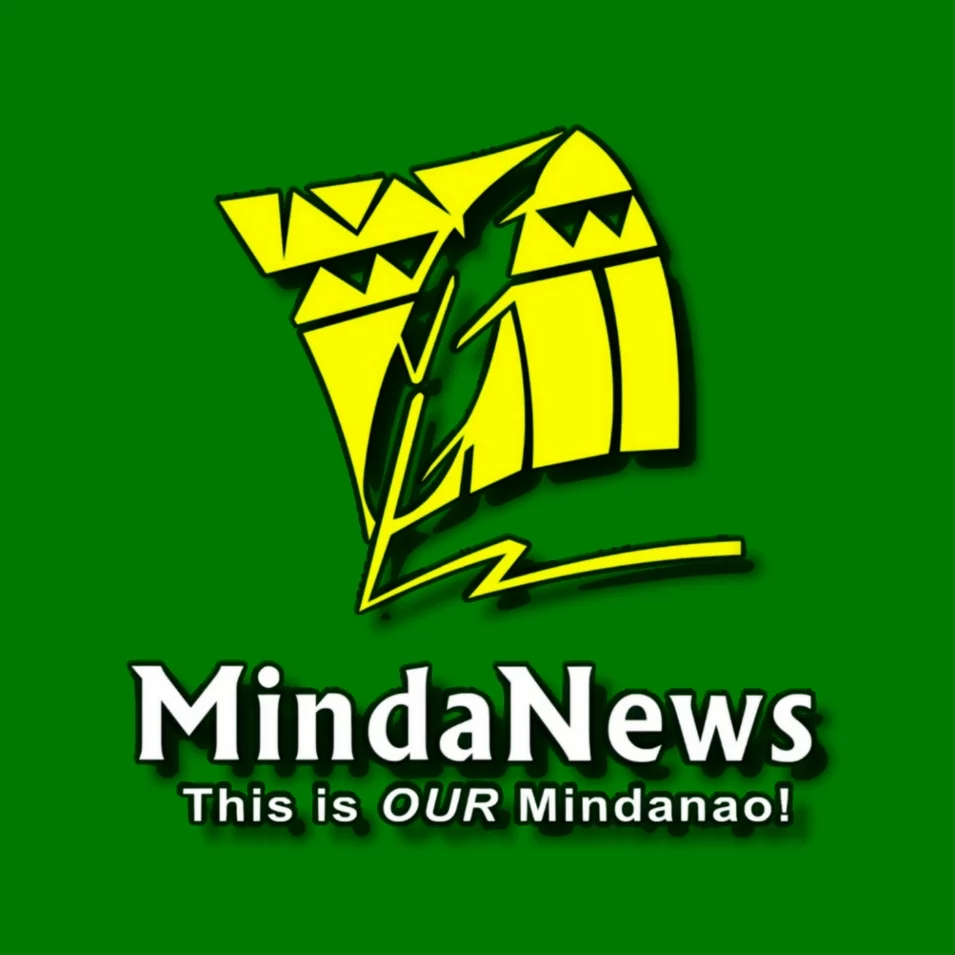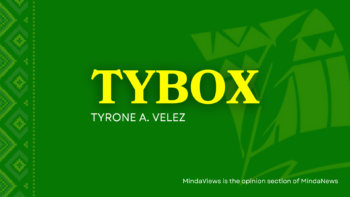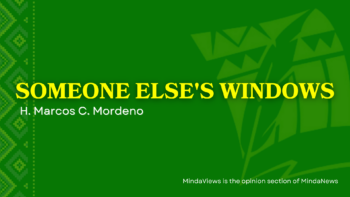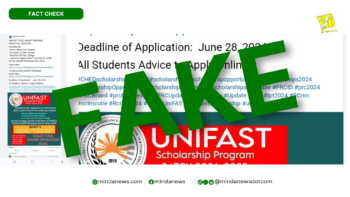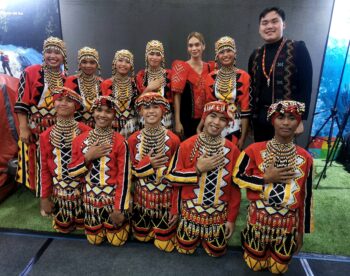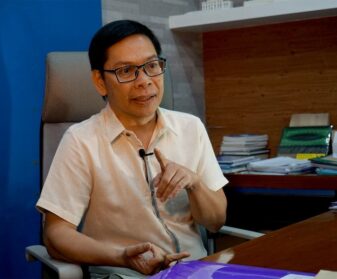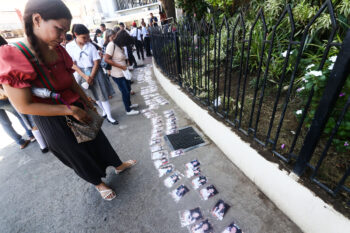DAVAO CITY (MindaNews/09 May) — Perhaps, we are now in a tilting point in the manner that Philippine History is being taught to the Filipino youth! For so long since the birth of the Philippine Republic, just over a century ago, Philippine History textbooks used in both public and private schools throughout the country by teachers teaching History were mainly those written from a Manila- or Luzon-centric perspective.
This was unavoidable, as most historical narratives that found their way into the history books were mainly about historical events unfolding in and around, or adjacent to the metropolitan capital of the Republic, namely Manila. Even as some of these were written by non-Filipinos, they privileged events in the North.
This was ironic, since there were already writings done by many foreign scholars as to the historical events unfolding in Mindanao. For example, there is a compilation of documentary sources that the Ateneo de Davao University History Department titled REVISITING DOCUMENTARY SOURCES IN MINDANAO MUSLIM HISTORY: FROM THE ADVENT OF ISLAM TO THE 1800s that will soon be published. In this compilation are articles written (or translated from primary sources) by Najeeb M. Saleeby, John Leyden, Cesar Majul and Jose Arcilla SJ. There is also the different volumes under Emma Helen Blair and James Roberstson’s THE PHILIPPINE ISLANDS, 1493-1898.
In the aftermath of the Philippine Revolution against Spain, there was a hunger for historical materials that could be taught in the schools especially after Independence in 1946. The Rizal course – where his novels were required reading – became canonical books to be read. But there were very few Filipinos with greater scholarship in the field of history who arose in the post-independence period who could do research and write a truly comprehensive Philippine history.
It seemed inevitable that the first Filipino historians who began to assert their right to interpreting our own history also did so from the perspective of Manila and the North. Thus Gregorio Zaide’s books – which were mainly the main textbooks that we of the post-war generation used in our classrooms – were the main sources of historical narratives. Eventually his interpretation of Philippine history was challenged by the likes of Teodoro Agoncillo and Renato Constantino. Still these authors were writing from the perspective of Manila and Luzon. There were also other historians who wrote a number of historical accounts e.g. Fr. Horacio dela Costa SJ but these books were not available to teachers of basic education, only to those who were doing college or post-graduate history studies in select schools in urban centers.
A few others, e.g. Dr. Samuel Tan and Dr. Peter Gowing did their best to bring to the country’s attention the events in Mindanao-Sulu but such efforts did not reach popular acceptance.
Then things radically changed in the last fifty years, especially since the authoritarian regime of Ferdinand Marcos. A new nationalist fervor – echoing the sentiments of the same nationalist vision of the 1860s to early 1900s – arose when a new generation of students hungered for a more comprehensive Philippine history, especially that which help to analyze the root causes of our society’s massive poverty, inequality and oppression of marginalized sectors.
Thus arose a new scholarship in the field of History that was also paralleled in the other fields of social sciences, especially sociology, anthropology and psychology. The new generation of scholars who were writing their theses and dissertations in local and foreign universities began to explore more and more national/regional/local realities as new post-colonial theoretical frameworks were made available to them. There were also non-university based research agencies and NGOs who entered into this realm and conducted research projects that would supplement those produced in the academic circles.
Before the end of the Marcos’ dictatorial regime and the rise of People Power in 1986, more and more literature were available. Of great interest were those written about Mindanao by Filipinos all over the country. And included in this list was a growing number of Mindanao-born historians.
One major work that came out at the height of martial law, was a book written by an author who used his nom de guere, namely Rad Silva. The book’s title – TWO HILLS OF THE SAME LAND – would attract a lot of attention among Mindanawon activists as it helped to expose the root causes of Mindanao’s social problems. (It would only be known much later on…in the post-EDSA era when it was safe to reveal his name, that Rad Silva was Professor Rudy Rodil, a long-time professor of MSUI-IIT in Iligan City and a member of the GRP-MILF peace panel for a number of terms. Professor Rodil could be credited as perhaps the first Mindanawon who have spent a whole lifetime researching, writing and lecturing about Mindanao History).
Eventually, a few more historians from and based in Mindanao also began to produce a lot of materials (as writers or editors) e.g. Francisco Demetrio, Alfredo Tiamson, Eric Casino, Erlinda Burton, Carmen Abubakar, Mashur Bin Ghalib Jundam, Jamail Kamlian, Greg Hontiveros, Macario Tiu and many others.
Datu Michael Mastura came up with a collection of essays under the title – MUSLIM FILIPINO EXPERIENCE published by the Ministry of Muslim Affairs in 1984.
Fast forward to today. Many groups, institutions,agencies and associations based in Mindanao have become more and more convinced to be engaged in promoting an “inclusive Mindanao history” and to make sure that across the country Philippine History classes should be taught integrating this regional aspect. For this reason there have been many efforts to promote this, as this advocacy has been seen to be an antidote to the perpetuation and even the deepening of biases and prejudices on the part of Filipino Christian lowlanders in their views of the Moro and Lumad peoples, especially those in Mindanao.
In the last two decades such an advocacy has started. The Philippine Historical Association of the Philippines have been encouraging their members to write more and more about local histories. Philippine stage and private colleges and universities were encouraging students writing their theses/dissertations with a view to doing researching on local realities, both past and present. Eventually the Department of Education (DepEd) began to promote more interest and even subjects in the curriculum of basic education that would deal with local histories and cultures. Thus a DepEd circular creating an IP Education program as well as a mother-tongue-based thrust in the first basic education levels.
In terms of the private sector, there have also been the same thrusts. In the advent of the need for peace-building, it became clearer and clearer for the peace advocates that peacebuilding efforts should integrate an education to the children in school that would make them better under the history of Mindanao and how this is an important aspect of learning about the nation and why we have the problems that we have today, and thus minimize misrepresentations that perpetuate myths.
Until we are better able to understand the specific characteristics of the identities of the various ehtnolinguistic communities throughout the archipelago we cannot expect that we would respect, dialogue and collaborate with one another in building a truly cohesive nation where genuine freedom, justice and peace will reign. (To be continued)
